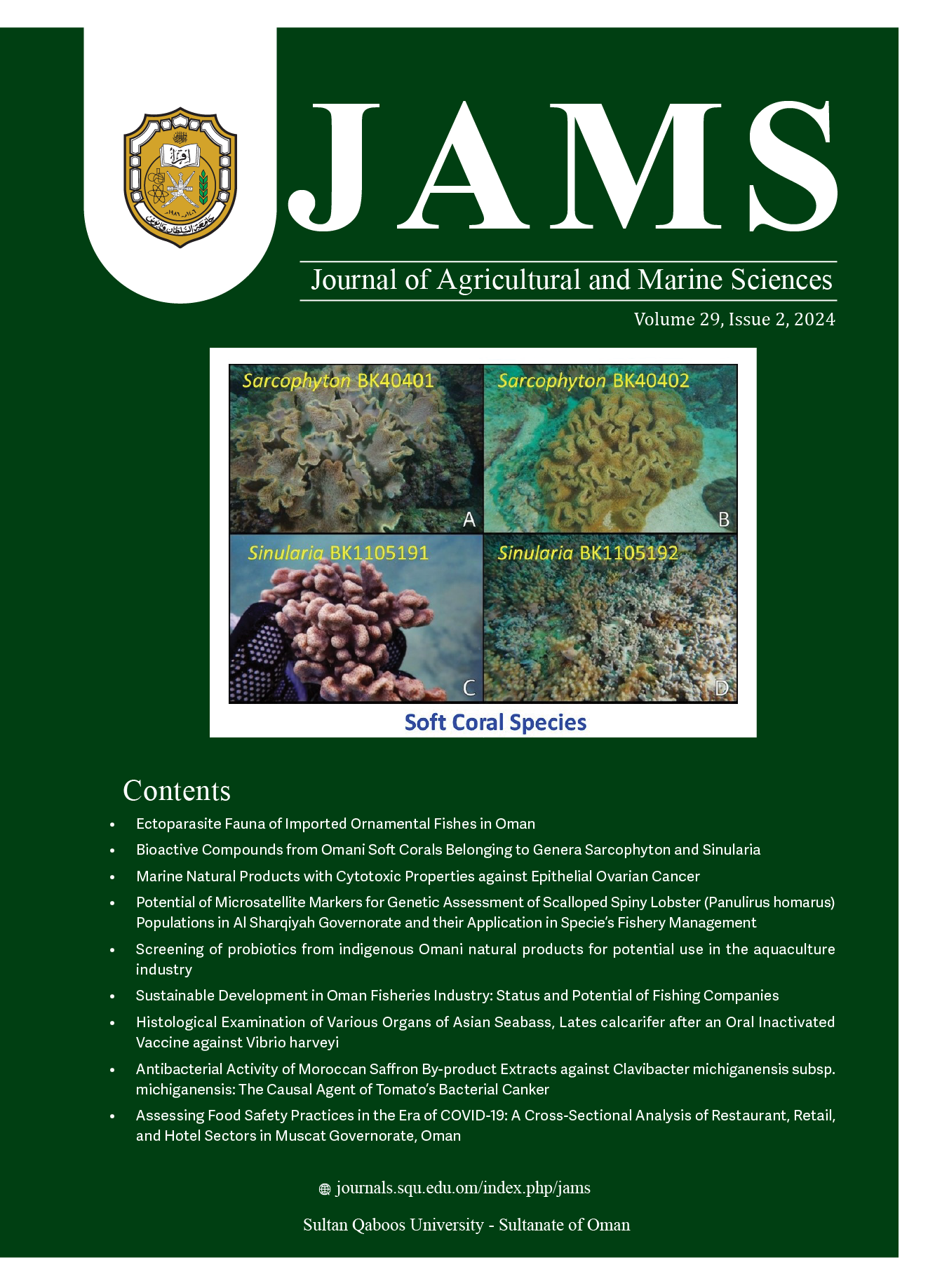Main Article Content
Abstract
Spiny lobster is one of the highest-priced seafood worldwide. Its fishery contributes well to the country's income and is considered one of the important export items to other countries. However, its annual catch declined sharply. Studying the stock is important for proper fishery management because stock responds differently to overexploitation and adaptation, therefore different stocks need different conservation plan. In this study, the genetic diversity and population differentiation of 50 P. homarus (the most present spiny lobster subspecies in Oman) from two regions (Al-Ashkharah and Masirah) of Al Sharqyah governorate were studied using 49 microsatellite markers. The results showed that P. homarus from the two sites are genetically similar based on low Fst (0.009), AMOVA test (1% variation). In addition, they are admixed as it is shown by DAPC (Discriminate Analysis of Principal Component) and by the phylogenetic tree. In conclusion, P. homarus from the two sites can be considered as a single stock, therefore the same fishery management and conservation strategy can be used to manage the spiny lobster fishery in Al Sharqyah governorate. More studies with a larger sample size are necessary to support our findings.
Article Details

This work is licensed under a Creative Commons Attribution-NoDerivatives 4.0 International License.

